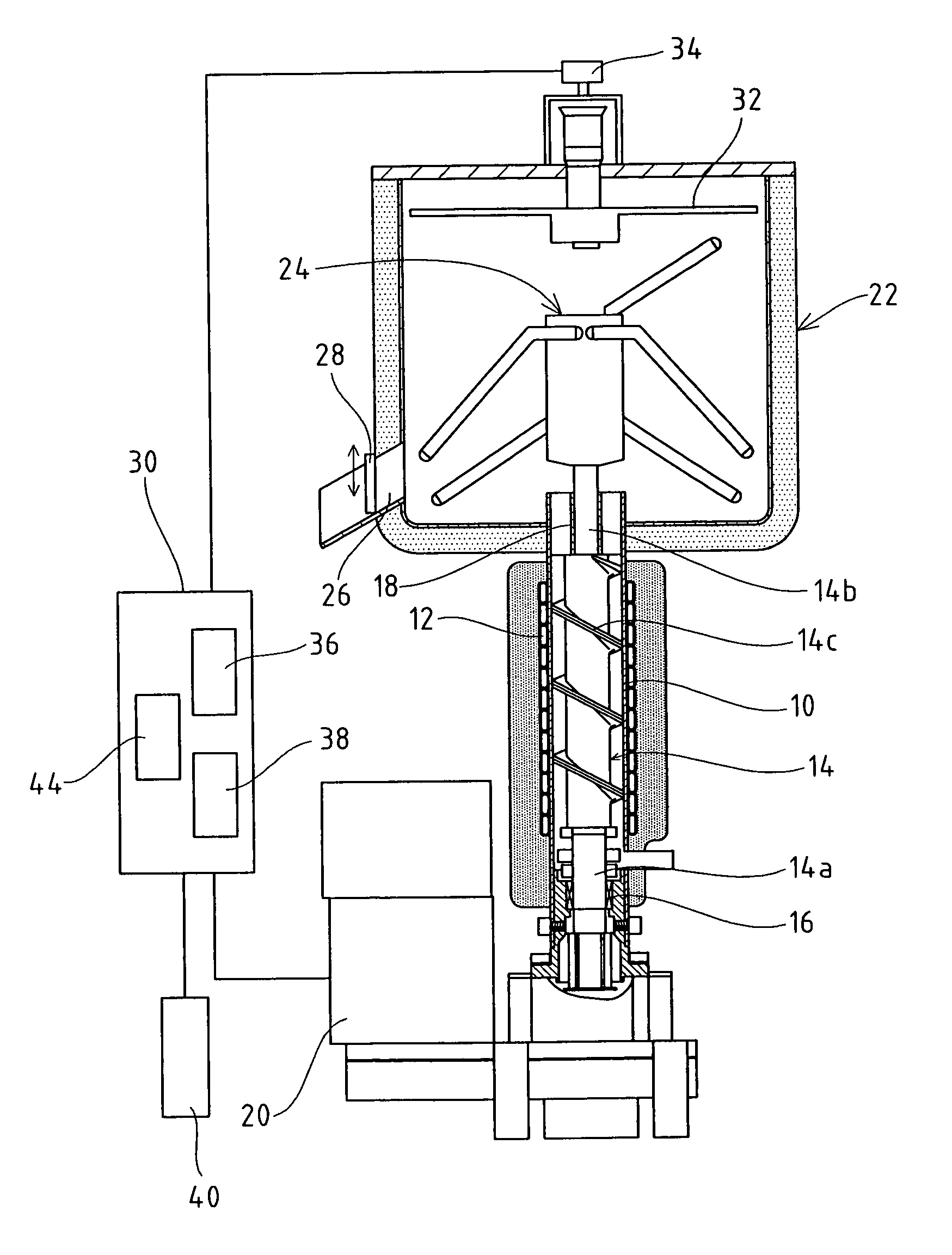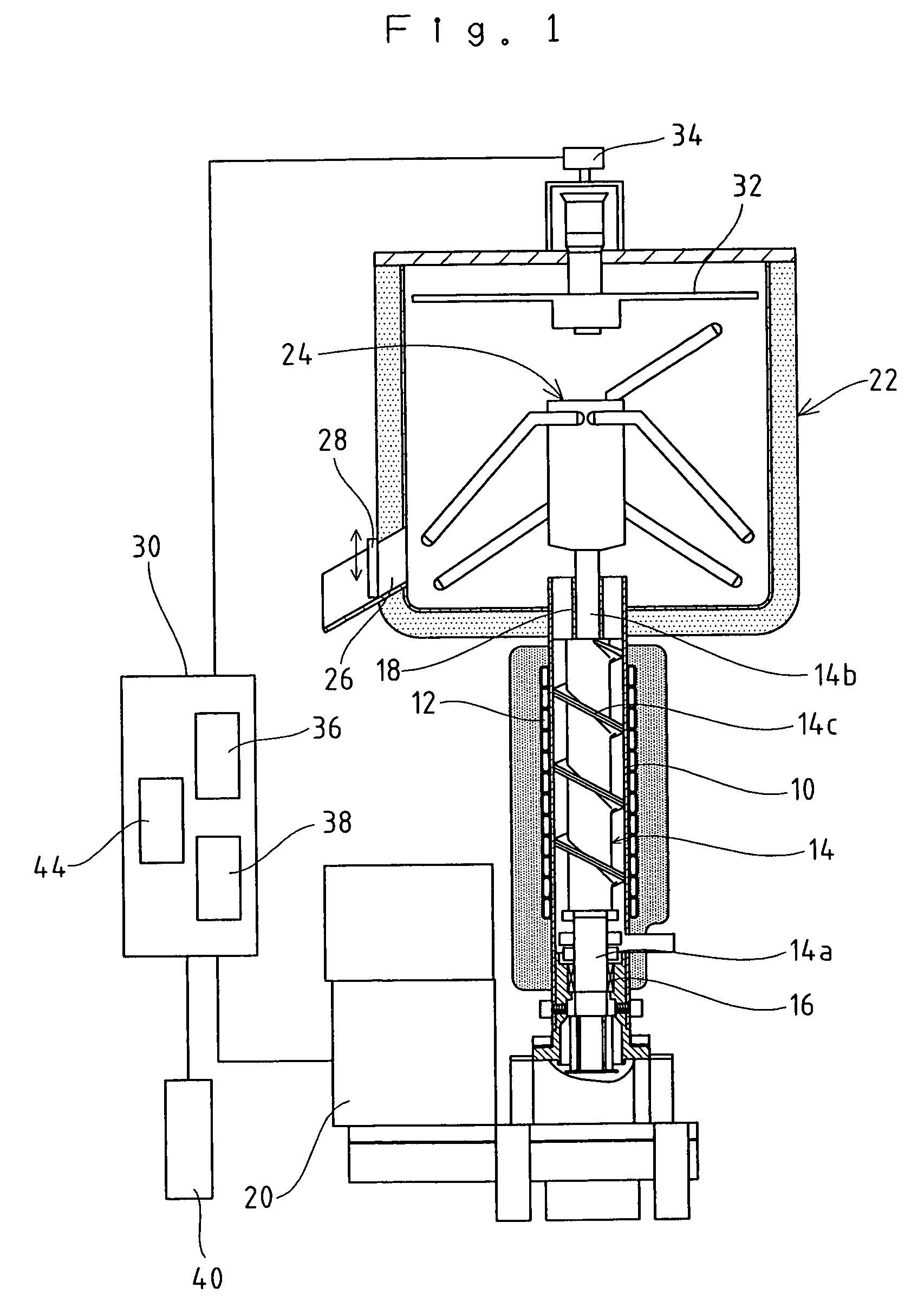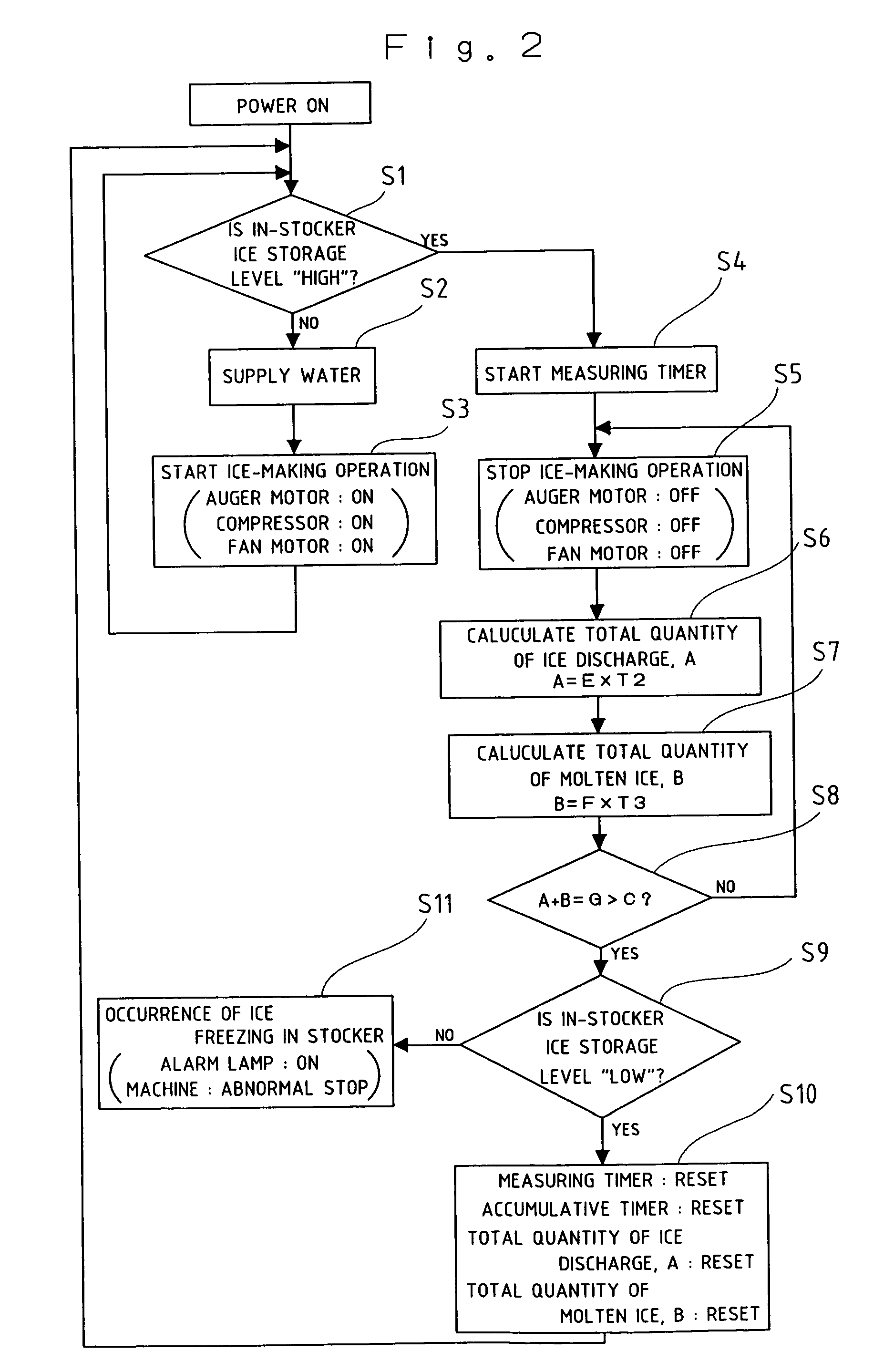Method of operating auger icemaking machine
a technology of icemaking machine and auger, which is applied in the direction of ice production, lighting and heating apparatus, domestic applications, etc., can solve the problems of failure of full-state detection, impeding the discharge of compressed ice, and limited difference between high level and low level detected by stored ice detection means
- Summary
- Abstract
- Description
- Claims
- Application Information
AI Technical Summary
Problems solved by technology
Method used
Image
Examples
first embodiment
[0020]FIG. 1 shows a schematic configuration of an auger ice-making machine to which is applied an operating method according to the present invention. In FIG. 1, the auger ice-making machine has, on an outer surface of a cylindrical refrigeration casing 10, an evaporation pipe (evaporation section) 12 communicating with a refrigerating system is tightly wound, and the machine is adapted to forcibly cool the refrigeration casing 10 by circulating a refrigerant through the evaporation pipe 12 when ice-making operation is started. In addition, the refrigeration casing 10 is adapted so that when ice-making water is supplied from an ice-making water tank (not shown) at a required level and ice-making operation is started, the refrigeration casing 10 is forcibly cooled. Hence, the ice-making water starts freezing gradually from an inner wall surface of the casing, and thus thin ice of a laminar form is formed.
[0021]Inside the refrigeration casing 10, an auger screw 14 is inserted, a lowe...
third embodiment
[0060]The controller 30 in the auger ice-making machine has a temperature sensor 42 connected for detecting an ambient temperature, a temperature Q detected by the sensor 42 being input to the controller 30. The controller 30 is adapted to calculate a unit quantity of molten ice (per unit time), FA, from the detected temperature Q.
[0061]That is, the applicant has experimentally found that as shown in FIG. 7, the unit quantity of molten ice, FA, of the compressed ice in the stocker 22 is proportional to an ambient temperature. The applicant has also verified that the unit quantity of molten ice, FA, at the ambient temperature can be calculated from the product of the constant N (4.47) obtained from the approximated line of FIG. 5, and the detected temperature Q.
[0062]In the operating method of the third embodiment, when the stored-ice detector 34 detects high level H, the controller 30 calculates the unit quantity of molten ice, FA, that is the quantity of melting of compressed ice ...
PUM
 Login to View More
Login to View More Abstract
Description
Claims
Application Information
 Login to View More
Login to View More - R&D
- Intellectual Property
- Life Sciences
- Materials
- Tech Scout
- Unparalleled Data Quality
- Higher Quality Content
- 60% Fewer Hallucinations
Browse by: Latest US Patents, China's latest patents, Technical Efficacy Thesaurus, Application Domain, Technology Topic, Popular Technical Reports.
© 2025 PatSnap. All rights reserved.Legal|Privacy policy|Modern Slavery Act Transparency Statement|Sitemap|About US| Contact US: help@patsnap.com



